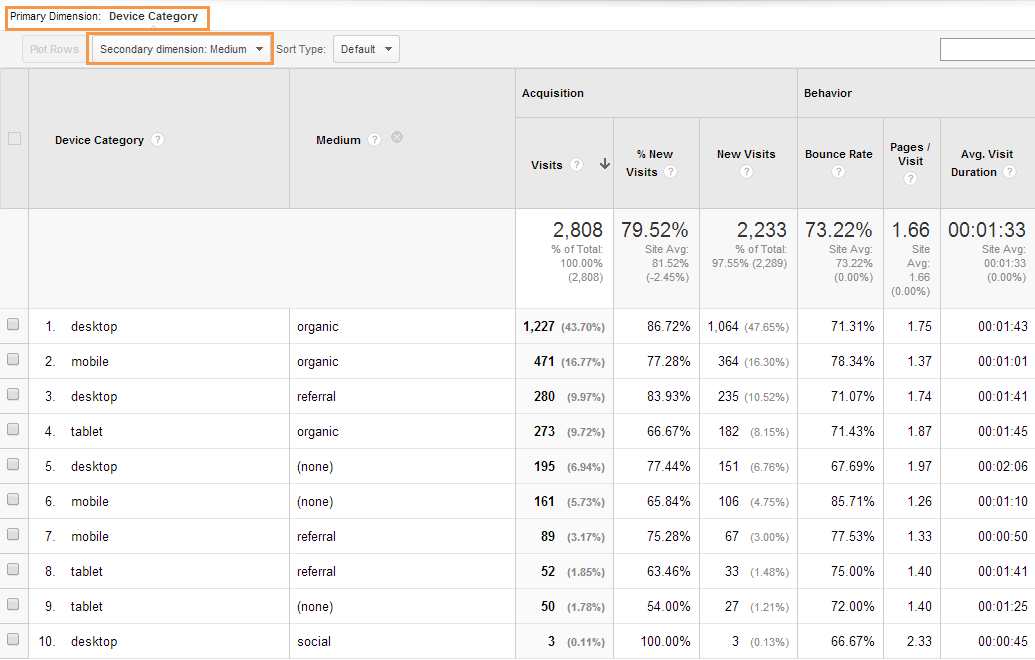Improving Data Accuracy: Google Analytics Secondary Dimension Insights
Improving Data Accuracy: Google Analytics Secondary Dimension Insights
Blog Article
Opening the Power of Additional Measurement Analytics for Enhanced Data Insights and Decision-Making
In the world of information analytics, main dimensions typically take the spotlight, but the true deepness of understandings exists within the world of additional dimensions. By harnessing the power of secondary measurement analytics, companies can reveal covert trends, uncover correlations, and extract extra purposeful final thoughts from their data.
Importance of Second Measurements
Exploring the significance of second measurements in analytics reveals the covert layers of information understandings important for informed decision-making in numerous domains. Secondary measurements provide a deeper understanding of key information by providing added context and point of views. By incorporating second dimensions right into analytics, organizations can draw out extra nuanced and thorough insights from their datasets.
One secret importance of second dimensions is their capacity to segment and categorize key data, permitting an extra comprehensive evaluation of particular parts within a dataset. This segmentation makes it possible for companies to recognize patterns, trends, and outliers that may not appear when looking at the data in its entirety. Additional measurements aid in uncovering connections and dependences in between different variables, leading to more precise forecasting and anticipating modeling - secondary dimension.
In addition, secondary dimensions play a vital duty in enhancing data visualization and reporting. By adding additional dimensions to visualizations, such as graphes or charts, experts can develop more helpful and insightful depictions of data, facilitating much better communication of findings to stakeholders. In general, the integration of secondary dimensions in analytics contributes in unlocking the full potential of data and driving evidence-based decision-making.
Key Benefits of Utilizing Second Dimensions
Using secondary dimensions in analytics supplies companies a critical benefit by boosting the deepness and granularity of data understandings. One essential advantage of including second measurements is the capability to section and filter data, allowing for an extra comprehensive analysis of particular aspects within a dataset. This segmentation makes it possible for companies to acquire a more nuanced understanding of their target market, efficiency metrics, and other essential data factors. By exploring data making use of additional dimensions such as time, area, gadget type, or customer demographics, companies can reveal patterns, fads, and connections that may or else stay hidden.
In addition, the usage of secondary measurements improves the context in which key data is analyzed. It provides a much more comprehensive view of the partnerships between different variables, allowing companies to make informed decisions based upon a more alternative understanding of their information. Furthermore, second measurements help with the recognition of outliers, anomalies, and locations for optimization, ultimately resulting in extra effective techniques and boosted end results. By leveraging secondary dimensions in analytics, try this out organizations can harness the complete possibility of their data to drive better decision-making and accomplish their organization purposes.
Advanced Data Analysis Techniques
A deep study innovative information evaluation methods reveals sophisticated methods for extracting valuable insights from complex datasets. One such technique is artificial intelligence, where algorithms are utilized to identify patterns within data, predict end results, and make data-driven choices. This approach permits the automation of analytical design structure, enabling the handling of big quantities of information at a quicker speed than traditional approaches.
Another advanced technique is predictive analytics, which makes use of analytical algorithms and artificial intelligence methods to forecast future outcomes based upon historical data. By assessing fads and patterns, companies can anticipate customer actions, market patterns, and prospective risks, encouraging them to make positive decisions.
In addition, text mining and sentiment evaluation are useful methods for extracting understandings from unstructured information resources such as social media remarks, customer testimonials, and survey responses. By assessing message data, companies can understand consumer viewpoints, recognize emerging fads, and improve their solutions or products based upon responses.
Enhancing Decision-Making With Second Dimensions

Enhancing decision-making via secondary measurements makes it possible for click here to read companies to make even more educated and targeted critical choices. By segmenting customer data based on secondary dimensions like buying history or involvement degrees, firms can customize their marketing strategies to specific audience segments, leading to improved conversion rates and customer satisfaction. Furthermore, additional dimensions can aid identify connections and relationships between different variables, enabling companies to make data-driven choices that drive development and earnings.
Implementing Second Measurement Analytics
When incorporating second dimensions in analytics, companies can unlock much deeper insights that drive calculated decision-making and improve total performance. This requires understanding the details concerns the company seeks to respond to and the information points called for to address them.

Moreover, companies ought to utilize advanced analytics tools and innovations to streamline the process of integrating second dimensions. These tools can automate information handling, analysis, and visualization, enabling companies to concentrate on interpreting understandings instead of manual data control.
Verdict
Finally, secondary dimension analytics play a vital duty in enhancing data insights and decision-making procedures. By making use of advanced data analysis techniques and executing additional measurements properly, companies can open the power of their information to drive strategic business decisions. The essential benefits of utilizing secondary measurements can not be overemphasized, as they give a much deeper understanding of information fads and partnerships. It is crucial for companies to utilize additional measurement analytics to stay competitive in today's data-driven landscape.
In the realm of data analytics, key measurements typically take the spotlight, but the real depth of insights exists within the world of secondary measurements.Using additional dimensions in analytics supplies organizations a tactical benefit by boosting the depth and granularity of data understandings. By leveraging additional measurements in analytics, companies can harness the full possibility of their data to drive better decision-making and attain their company purposes.
Carrying out data recognition processes and normal audits can assist maintain information quality and integrity.
By using innovative data evaluation methods and applying additional measurements successfully, companies can unlock the power of their information to drive tactical organization decisions.
Report this page